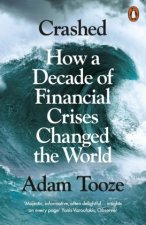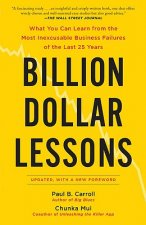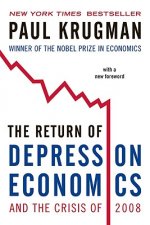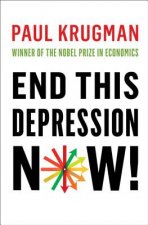
Code: 01339619
Financial Stability in the Aftermath of the 'Great Recession'
by Philip Arestis
The financial crisis and the ensued 'great recession' are primarily caused by the excessive liquidity that was created in the last thirty years or so of inequality that benefited greatly the financial sector, deregulation and fina ... more
- Language:
 English
English - Binding: Hardback
- Number of pages: 260
Publisher: PALGRAVE MACMILLAN, 2013
- More about this

122.83 €

Low in stock at our supplier
Shipping in 10 - 15 days
Potřebujete více kusů?Máte-li zájem o více kusů, prověřte, prosím, nejprve dostupnost titulu na naši zákaznické podpoře.
Add to wishlist
You might also like
-

Heavy Rain - How to Flood Your World with God`s Transforming Power
16.15 € -11 % -

Priest Under Fire
73.33 € -

Český hraný film IV. / Czech Feature Film IV.
37.94 € -6 % -

John Saturnall's Feast
11.75 € -4 % -

Environment and Sustainable Development in the New Central Europe
41.72 € -

Financing Terrorism
122.83 € -

Baobabs: Pachycauls of Africa, Madagascar and Australia
419.97 €
Give this book as a present today
- Order book and choose Gift Order.
- We will send you book gift voucher at once. You can give it out to anyone.
- Book will be send to donee, nothing more to care about.
More about Financial Stability in the Aftermath of the 'Great Recession'
You get 304 loyalty points
 Book synopsis
Book synopsis
The financial crisis and the ensued 'great recession' are primarily caused by the excessive liquidity that was created in the last thirty years or so of inequality that benefited greatly the financial sector, deregulation and financial liberalisation as well as financial innovation, which are based on the supposedly superior intellectual model of the Efficient Markets Hypothesis. There were also contributory factors that accentuated the process, such as international financial imbalances, the monetary policy pursued at the time, and the role played by the credit rating agencies. The New Consensus Macroeconomics model that forms the backbone of the way the economy works and how monetary policy should be formulated in theory and practice is scrutinised. It is argued that the traditional approach of viewing housing as a capital good must be dropped and housing should be viewed as a speculative asset, akin to equities. This new theorising is necessary as in the traditional approach bubbles cannot exist. A chapter is devoted to the causes of the European Union (EU) debt crisis, the reasons why the crisis has dragged on, the remedial treatment applied so far, offering alternative viable solutions to the crisis and examining the channels through which the EU debt crisis might spread to the rest of the world. Finally, the book draws on the lessons for theory and policy from the recent experience and discusses in detail the new regulatory environment that policymakers attempt to put in place to avert another credit crisis.
 Book details
Book details
Book category Books in English Economics, finance, business & management Economics Economic & financial crises & disasters
122.83 €
- Full title: Financial Stability in the Aftermath of the 'Great Recession'
- Author: Philip Arestis
- Language:
 English
English - Binding: Hardback
- Number of pages: 260
- EAN: 9781137333957
- ISBN: 1137333952
- ID: 01339619
- Publisher: PALGRAVE MACMILLAN
- Weight: 458 g
- Dimensions: 223 × 139 × 20 mm
- Date of publishing: 04. October 2013
Trending among others
-

This Time Is Different
20.75 € -11 % -

Big Short
12.47 € -

Boomerang
15.03 € -

Too Big to Fail
17.17 € -23 % -

Value of Everything
10.93 € -24 % -

House of Debt - How They (and You) Caused the Great Recession, and How We Can Prevent It from Happening Again
15.13 € -7 % -

Two Trillion Dollar Meltdown
24.13 € -

Crashed
16.97 € -22 % -

Crisis Economics
11.45 € -28 % -

Global Minotaur
14.41 € -28 % -

Panic!
11.45 € -28 % -

Animal Spirits
15.64 € -18 % -

Billion Dollar Lessons
13.80 € -21 % -

After the Music Stopped
14.82 € -30 % -

Return of Depression Economics and the Crisis of 2008
15.23 € -17 % -

Boomerang
11.45 € -28 % -

Origin of Financial Crises
11.45 € -28 % -

China's Great Wall of Debt
10.42 € -28 % -

Money and Government
14.41 € -23 % -

Finance Curse
10.42 € -28 % -

Whoops!
11.45 € -28 % -

House of Cards
19.83 € -23 % -

Capitalism's Crisis Deepens
17.17 € -19 % -

End of Alchemy
16.56 € -23 % -

Big Short
25.25 € -19 % -

Freefall
13.49 € -26 % -

History of the United States in Five Crashes
15.74 € -23 % -

End This Depression Now!
14.82 € -14 % -

Stock Market Crashes: Predictable And Unpredictable And What To Do About Them
40.90 € -

Financial Turmoil in Europe and the United States
27.09 € -23 % -

Diary of the Euro Crisis in Cyprus
55.12 € -

Good Room
18.81 € -18 % -

Euro Crisis and Its Aftermath
35.48 € -18 % -

Masters of Nothing
20.24 € -4 % -

Good Italy, Bad Italy
25.05 € -4 % -

Don't Blame the Shorts: Why Short Sellers Are Always Blamed for Market Crashes and How History Is Repeating Itself
34.97 € -15 % -

Sellout
29.24 € -4 % -

13 Bankers
15.74 € -19 % -

Freefall
24.95 € -9 % -

Courage to Act
19.63 € -19 % -

Bailout Nation with New Post-Crisis Update - How Greed and Easy Money Corrupted Wall Street and Shook the World Economy
18.81 € -19 % -

Crash of 2008 and What it Means
20.24 € -13 % -

Planet Ponzi
13.08 € -18 % -

Great Recession
35.38 € -

End This Depression Now!
21.88 € -16 % -

The End of Alchemy
15.84 € -21 % -

Subprime Solution
22.08 € -

After the Crisis
22.39 € -

Price of Politics
15.13 € -4 %
Collection points Bratislava a 2642 dalších
Copyright ©2008-24 najlacnejsie-knihy.sk All rights reservedPrivacyCookies


 15549 collection points
15549 collection points Delivery 2.99 €
Delivery 2.99 € 02/210 210 99 (8-15.30h)
02/210 210 99 (8-15.30h)